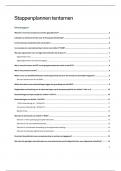Exam (elaborations)
HRM2605 Assignment 6 (COMPLETE ANSWERS) Semester 2 2024 - DUE 25 October 2024 Course Human Resource Management for Line Managers (HRM2605)
- Institution
- University Of South Africa
HRM2605 Assignment 6 (COMPLETE ANSWERS) Semester 2 2024 - DUE 25 October 2024 Course Human Resource Management for Line Managers (HRM2605)QUESTION 1 [25 marks] Read the following scenario and then answer the questions that follow. Godfrey Makobane is the plant manager of a light assembly plant in...
[Show more]













